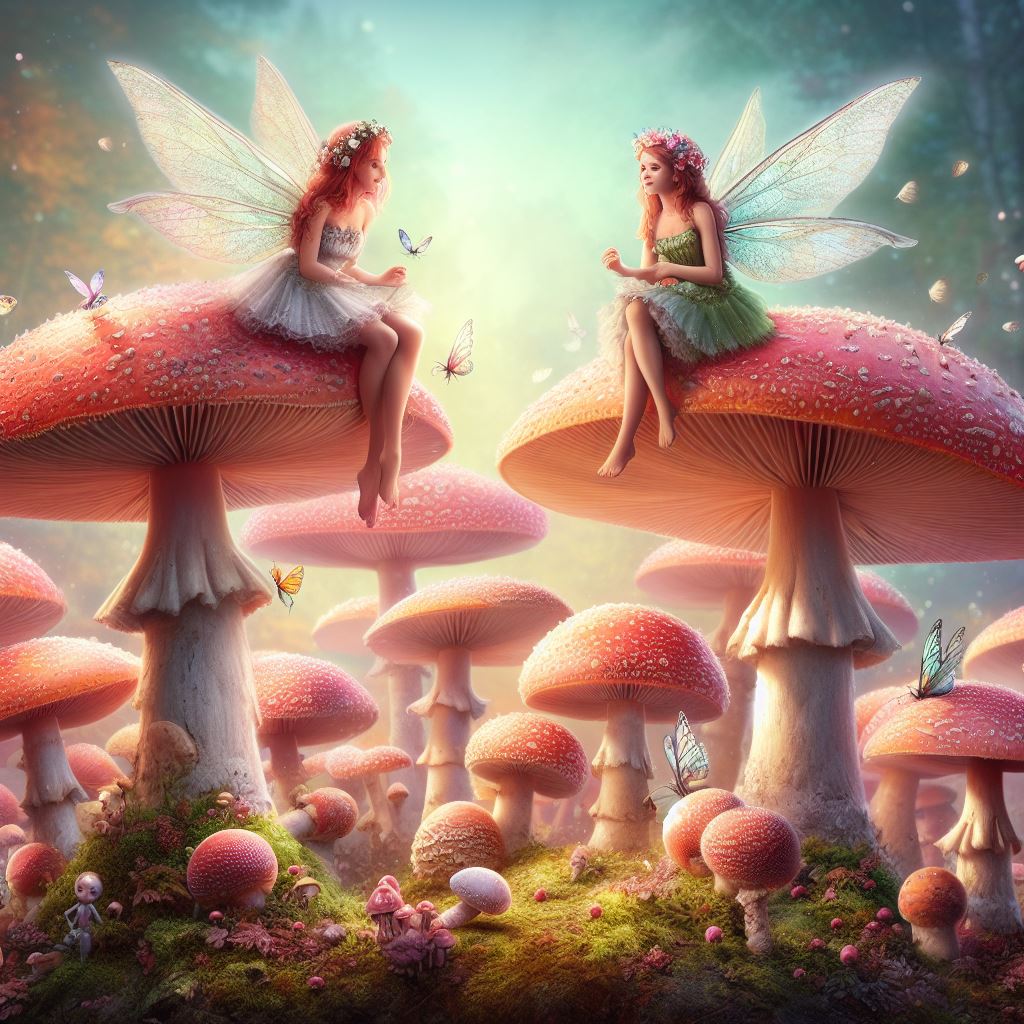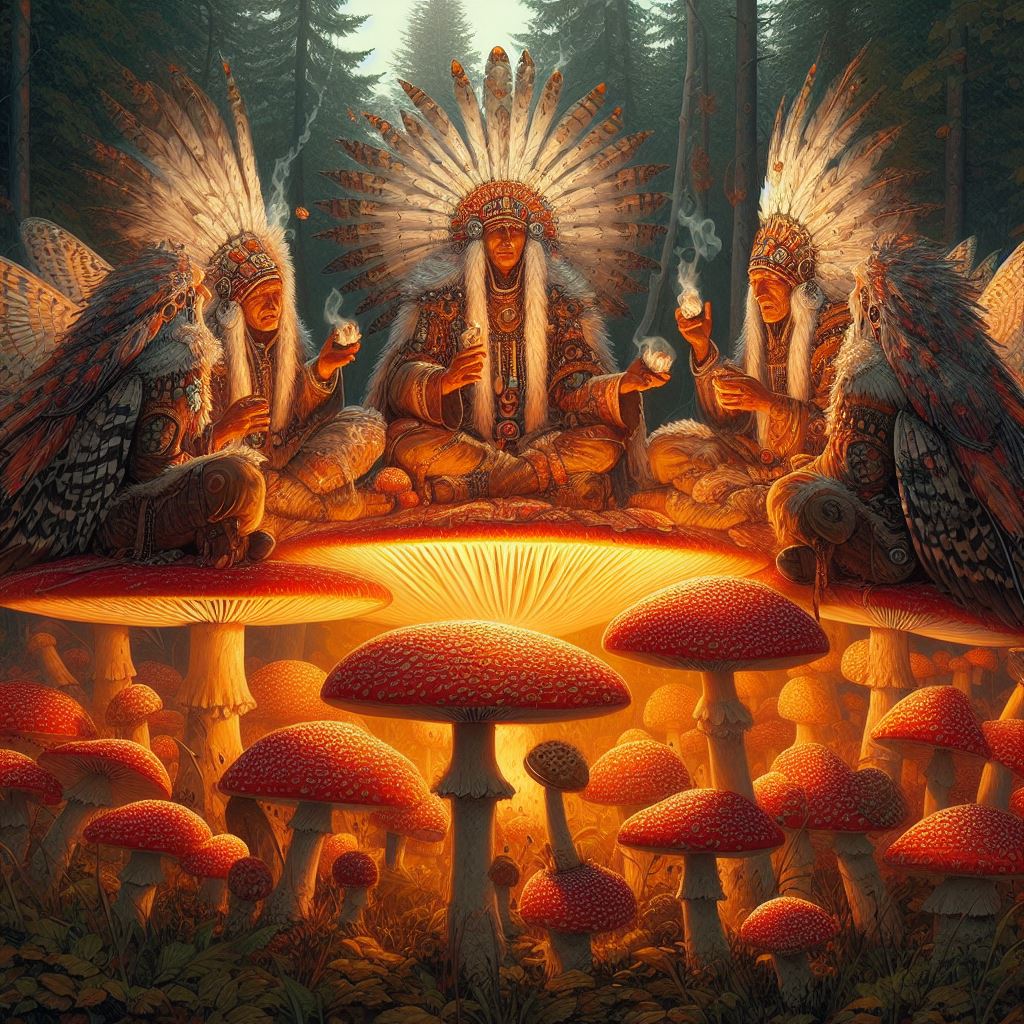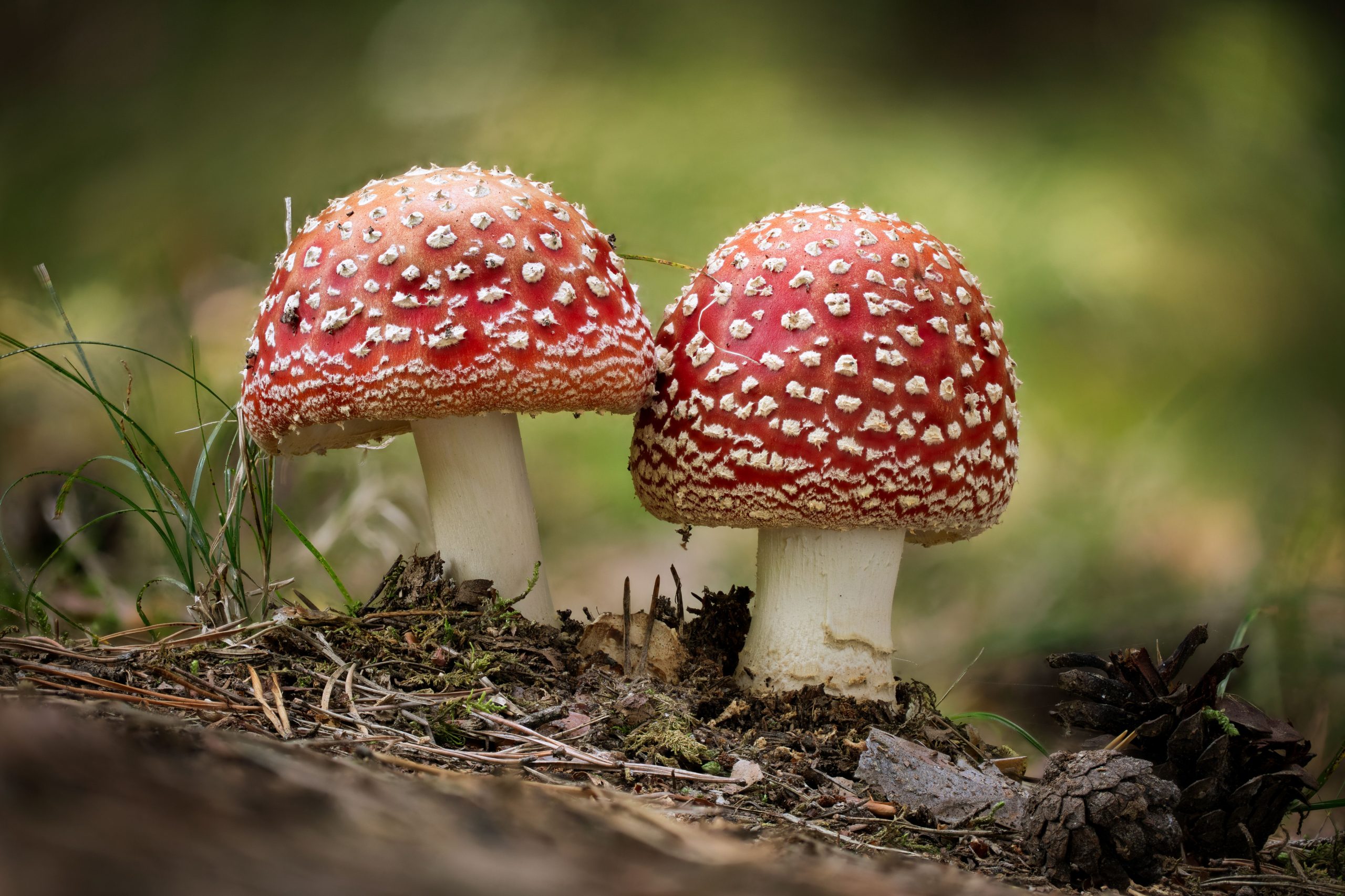Amanita muscaria, often referred to as the fly agaric mushroom, is an iconic fungi known for its distinctive red cap and white speckles. Native to many parts of Europe, including here in the United Kingdom, this amazing mushroom has captured the imagination of foragers, mycophiles, and folklore enthusiasts, artists, storytellers alike.
Amanita Muscaria is indigenous to the UK, thriving in woodlands, heathlands, parks with well-drained soils, typically near birch, pine, or spruce trees. This Fly agaric establishes mycorrhizal relationship with the trees. A mycorrhizal relationship is where the mushroom provides nutrients to the tree and in return the tree provides essential sugars to the mushrooms.
The name “fly agaric” itself is derived from its historical use as an insect repellent. In the UK, as in other regions, it was believed that crushed or powdered fly agaric could be used to deter flies and other insects. People would place it in milk or other substances to keep pests at bay.
Folklore
Fly agaric is often associated with fairy folklore in the UK. In some stories, it is believed that the vivid red caps with white speckles served as the stools or seats for fairies or pixies. These magical beings were said to use the mushroom as a resting place during their activities in the forest.
The presence of a ring of fly agaric mushrooms, known as a “fairy ring,” was believed to be evidence of the fairies. It was thought that these mushrooms served as seats for fairies during their gatherings. Folk tales cautioned against disrupting these circles, as it was believed to anger or displease the fairies.
According to some stories, the bright red and white fly agaric was not just a seat but a stage for the fairies to dance. The vivid caps of the mushrooms were seen as a perfect platform for the fairies’ performances during moonlit nights.
In some tales, fly agaric was considered a doorway or portal to the fairy realm. Sitting on a fly agaric was believed to transport a person into the land of the fairies, where time flowed differently. However, the unpredictability of such journeys was often emphasised in these stories.
The iconic imagery of Santa Claus, his red suit, and white trim has been suggested to have been influenced by the fly agaric’s appearance. Some theories propose that the association between Santa Claus and the fly agaric’s colours may have contributed to the modern image of Santa Claus.
While not unique to the UK, the fly agaric has been used in shamanic practices and rituals in various cultures including those in the UK, and may have used it for such purposes.

Ethnobotanical Uses
While the mushroom’s toxicity is well-documented, some cultures have found ways to use it in a controlled manner. Traditional practices in Siberia, for instance, involve carefully drying the mushroom to reduce its toxicity and using it in shamanic ceremonies.
It’s important to stress that Amanita muscaria should never be consumed without expert knowledge, as its toxicity can be life-threatening. In the UK. It is illegal to sell Amanita muscaria for consumption.

